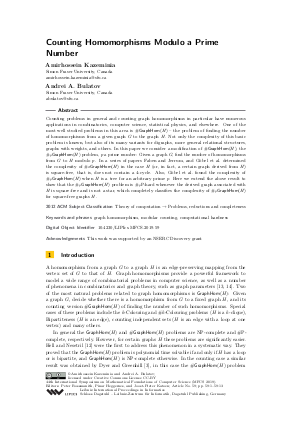LIPIcs.MFCS.2019.59.pdf
- Filesize: 0.57 MB
- 13 pages

 Creative Commons Attribution 3.0 Unported license
Creative Commons Attribution 3.0 Unported license


















Feedback for Dagstuhl Publishing